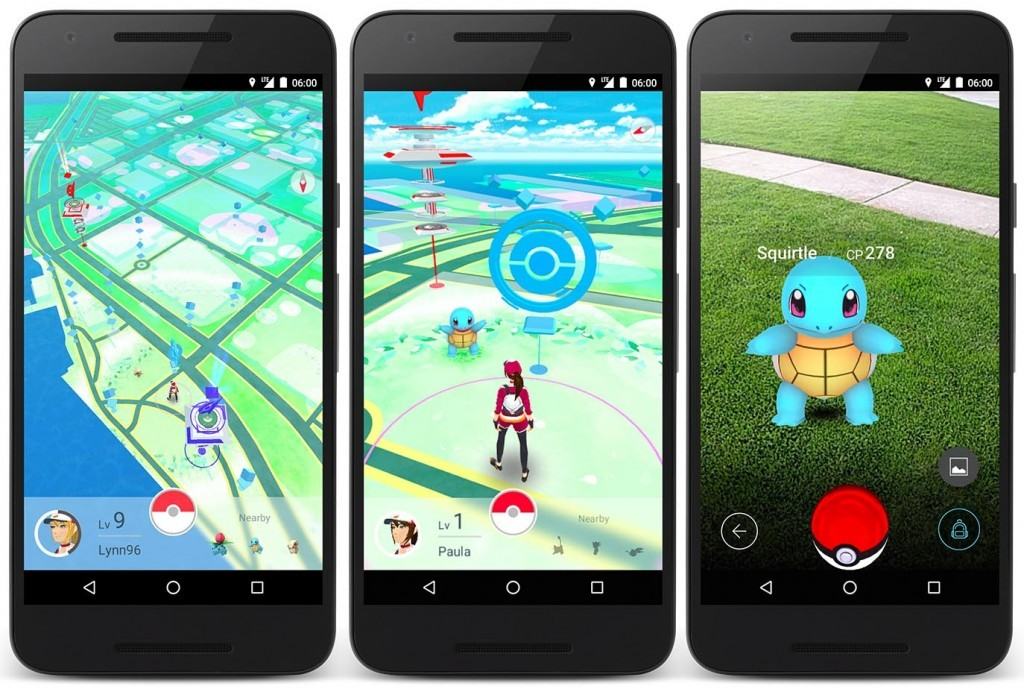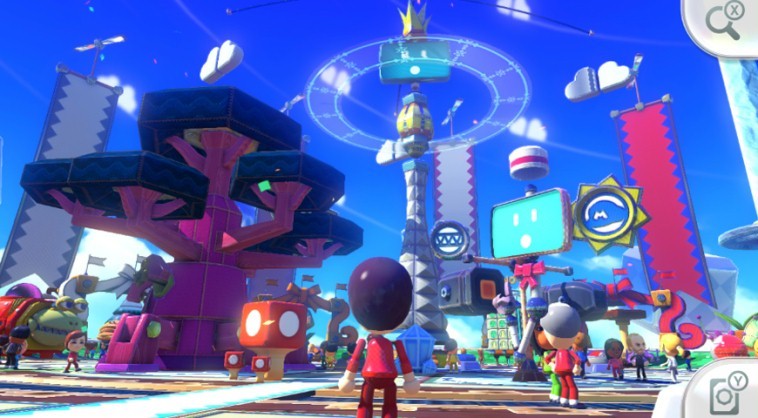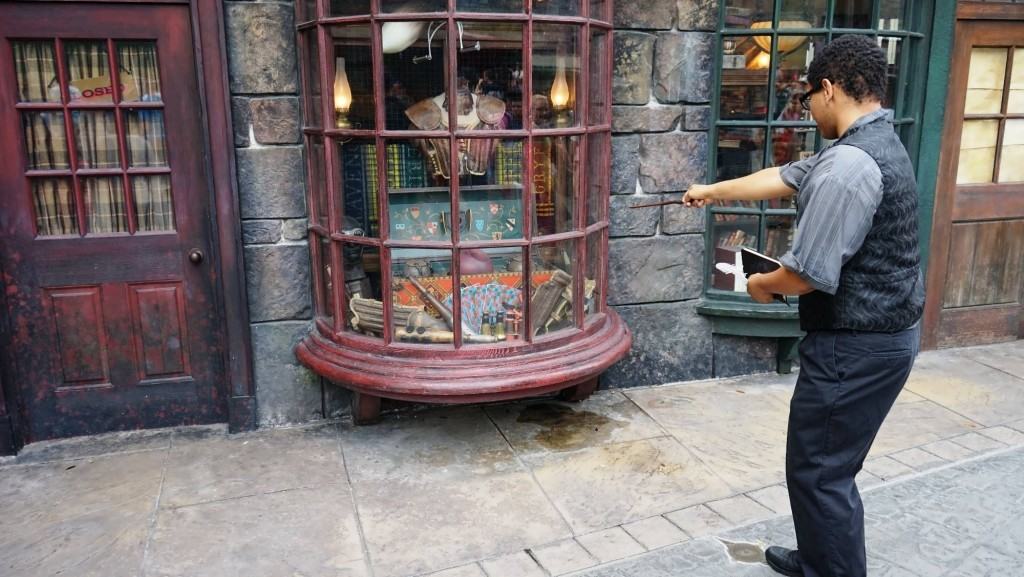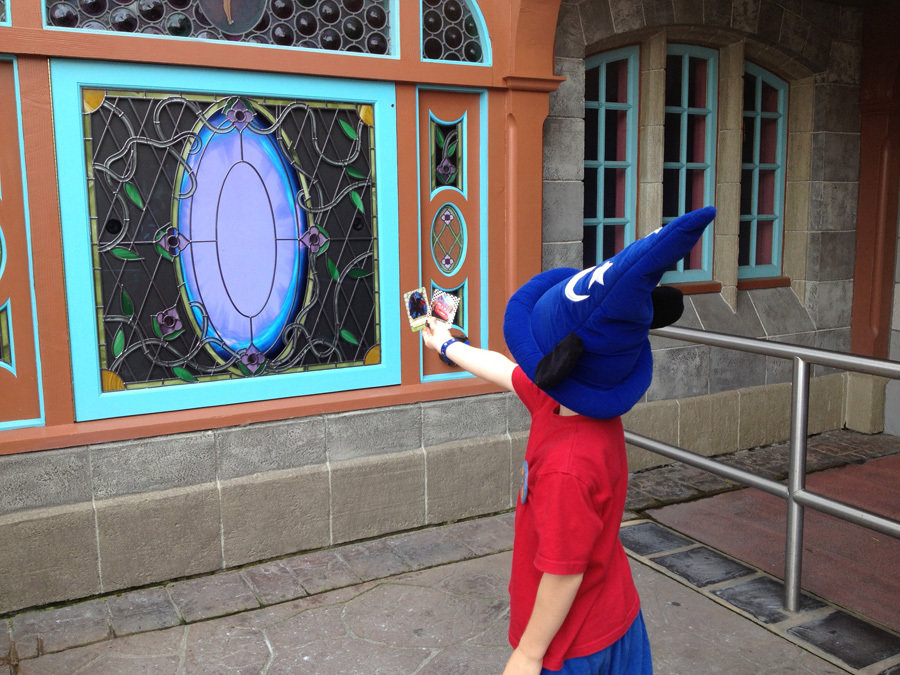Pokemon Go has, over the course of the past week, dominated news stories (thanks to its being used on smart phones more than Tinder and Twitter, to it adding $9 billion of value to publisher Nintendo, and, of course, thanks to all the various real-world mishaps it’s been wreaking across the country, including a teenager finding a dead body while playing). What’s lesser known is that it’s also making quite a few waves in theme park circles.

Well, at least, it will, starting with the fact that the themed operators already have dipped their toes in the augmented-reality game craze (Disney has Sorcerers of the Magic Kingdom, while Universal has been experimenting with the technology behind-the-scenes – more on this in a moment) and ending with the specific possibilities that the Nintendo-Universal alliance offers. Not to put too fine a point on it, but the new mobile Pokemon game can very well point to the future of themed entertainment.
We here at Orlando Informer HQ have sketched out four major ways Go-inspired attractions can be implemented at Universal Orlando Resort – but before we can dive on into them, we first need to ask a very simple, expositional question:
What the heck IS Pokemon Go, anyway?
Nintendo is a company that’s been around the block since 1889, and it’s seen its fair share of different products or business bents: hanafuda playing cards (including, ironically enough, Disney-licensed ones in the 20th century), love hotels (seriously – look that up sometime [preferably when no one else’s around]), videogames, and, now, mobile games, since the company has fallen on some hard times within the console space over the course of the past 15 years, generally speaking.

Pokemon Go is the first of these smart phone titles (no, Miitomo doesn’t count), reviving the aging-but-still-popular Pokemon franchise by physically and literally making gamers go out and about in the really-real world in order to find, catch, and then train the various mythical Pocket Monsters (where the Japanized compound word Pokemon originates from). This is accomplished by using your smart phone’s GPS, camera, and clock (since the various creatures only come about at certain times of the day), and this is why there’s been all those bizarre news stories about users getting in car accidents or tripping down hills or why certain institutions, such as various police departments and, even, the Holocaust Memorial Museum have been asking Go enthusiasts to refrain from playing at their premises.
(This is, of course, just a quick overview of the game; for a far more in-depth explanation, including a brief breakdown of how Go compares to the original, 20-year-old Pokemon entries, be sure to check out Vox’s excellent feature.)
1. Exclusive Universal Pokemon
Nintendo very joyously broadcasted to the world a little over a year ago that it had signed a deal with Universal Parks and Resorts to bring its various wonderful franchises to Universal locations around the globe. This means that the two companies, of course, share something of a close relationship, and it would suggest that this closeness could be exploited to have Pokemon Go’s various monster denizens exclusively appear at Universal’s parks – or, should that business reality prove impossible or otherwise elusive, at least to have them feature exclusive Pocket Monsters.

Though a rather blatant possibility, it’s actually no small matter – even after just several days of release, various businesses all around the country have started to try and cash in on the new Pokemon craze, enticing (or outright demanding) gamers to do a quick bit of shopping as they’re busy catching them all in their stores. (There’s the question, somewhat serious, of whether hotels should start charging premium rates for the rooms that feature the pesky digital fellas.) And Walt Disney World has already seen quite a bit of Go-related activity, arguably more than what Universal Orlando has been receiving.
2. The next interactive wand experience
Of course, limiting oneself to the pre-existing Pokemon Go is, well, rather limiting; theme parks are the stuff of dreams, and the bigger and more expansive and more detailed they are, the more successful (both creatively and commercially) they tend to be. Given that Nintendo Land will need several attractions of varying sizes and types to fill its dozen (or so) acres of land with, Nintendo’s latest forays into augmented-reality games could more than fit the bill.

Such a concept already has some bearing in another land’s lineup of attractions: in both of the Wizarding Worlds of Harry Potter, interactive wand experiences dot the landscape, allowing guests to flick specially-purchased wands to trigger various animations around either Diagon Alley or Hogsmeade, typically in storefronts. While it’s not meant to hold a candle to, say, Harry Potter and the Escape from Gringotts, it is the perfect cherry to put on the thematic sundae, a final touch to engage visitors and increase their immersion. There’s no reason why a special, made-from-the-ground up version of Go – say, with all of Nintendo’s various characters (and not just the Pokemon), which guests could then duel one another with – couldn’t pull exactly the same duty.
3. Wand+
There is a drawback to the previous scenario, and while it may not be a huge one, it is certainly a substantial one: by the time that Nintendo Land finally opens within the next two or three years (or, perhaps, even longer, given all the delays), Pokemon Go will have long faded away from the popular consciousness, more than likely proving itself to be more of a gimmicky fad (like with the Wii, Nintendo’s ultimately-ill-fated fifth console system) than a new cultural mainstay. The problem is only compounded when one considers that any type of in-park spinoff could very well meet the same outcome – Universal Studios Florida itself, after all, quickly outlived the novelty of its original premise (learn all about filmmaking at a quasi-backlot!) and was forced to make the painful-and-slow transition into a traditional theme park proper.

One possible solution, then, may be to use the augmented reality nature of the game as an additive to an attraction instead of as the basis. Imagine those Harry Potter interactive wand experiences infused with extra animations or, even, the appearance of the characters from the films and books that observers would be able to see when peering through special glasses or other premium pieces of merchandise. Or maybe as a secondary contest going on in Men in Black: Alien Attack, a type of expert-level add-on that can breathe a whole new life into the aging ride.
4. Legendary Truth-esque attraction
Okay – this is where things get really interesting.
In 2014, Universal Art and Design put on a special, extra haunted house that was only open to a select few (essentially, those who played along with the Legendary Truth meta-game, hopping around USF and solving secret riddles). Guests were dispatched in groups of four, moving from room to room with a tablet that allowed them to pick up certain clues and interact with the various scenes in highly unusual ways. The centerpiece was unquestionably the funeral room, in which a ghost that was only visible through the tablet’s camera would talk with the participants, allowing for an extremely personalized experience.
When combined with Go’s refined technology and extreme popularity, unleashing an updated and expanded version of this experience is an absolute no-brainer; with improv actors responding to your every word and action off-stage, the sky’s truly the limit for Universal to provide what could very easily be the most immersive theme park attraction yet.
If only they could figure out how to conquer what would be the astronomically high wait times…

